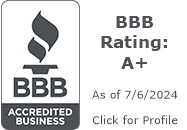Taxes may not be due until April, but it’s always a good idea to round out the end of the year by getting your finances in order. There are a few helpful things you can do to prepare for the upcoming tax filing season.
Here is a simple guide to get you started:
Compare Standard vs. Itemized Deductions
The majority of Americans take the standard deduction, but it’s worth noting that the IRS announced the below changes for the 2022 standard deductions:
- Married couples filing jointly: $25,100
- Single taxpayers and married individuals filing separately: $12,550
- Heads of households: $18,800
If you believe you may have enough deductible financial transactions to surpass the standard deduction amount, you would be saving more tax dollars by itemizing.
There are certain advantages to itemizing your deductions, depending on your unique financial situation. The following is a list of examples of ways itemizing your deductions can provide you with some financial flexibility:
- Making year-end charitable donations to increase this year’s deductions
- Prepaying any expenses eligible for itemized deductions
- Delaying expenses that are eligible for itemized deduction
Your strategy will depend on whether you want to maximize your deductions for this year or next year. Consider your current tax bracket and your potential for income variation in the following year when making this decision.
Find a Home for Any Extra Cash
Charitable Donations
Making a charity donation to any eligible 501(c)(3) nonprofit counts as a tax deductible financial transaction. For donating items like clothing or household goods, the deduction is limited to the item’s current fair market value.
Typically, these deductions are only applicable for those who itemize. For 2021, the IRS is allowing a deduction for individuals and families filing Standard Deduction to take advantage of charitable deductions of up to $300, and up to $600 for those married and filing jointly. Be sure to save your donation receipts for when you file.
If you have stocks or assets with a huge capital gain, you can use the stocks by gifting them to a charitable organization at fair market value. Don’t have a named charitable organization in mind? You can look into a Donor Advisor Fund. The Donor Advisor Fund allows you to take advantage of the deduction and you can name the charity later.
Retirement Contributions
Pre-tax retirement plans like a 401(k) or IRA directly reduce taxable income; the amount you contribute this year is the exact amount your taxable income is reduced by. Your deadline for contributing to a 401(k) is December 31st, but you have until April 15th to contribute to an IRA.
The basic employee contribution limit is $19,500. This limit includes all elective employee salary deferrals and any after-tax contributions made to a Roth account within your 401(k) or a special Roth 401(k) plan. For people aged 50 and older, you can add an additional $6,500.
Investments
Lastly, you can invest in a short-term CD or a U.S. Treasury bill. A short-term CD offers some flexibility when it comes time to withdraw your funds. If you want to withdraw early, the fee is lower than with a long-term CD. If you aren’t ready to withdraw, you can renew it multiple times within a year or two. The interest rate may be low, but having your money working for you instead of serving as a part of your taxable income is certainly worth considering.
Treasury bills are bonds issues with the maturity of one year or less. They are considered the safest bonds because they are backed by the U.S Government. The interest is paid out at maturity instead of throughout the holding period. This can be useful if you want to shift some of your income into the following year.
Sell Off Securities
For any investments you have outside of retirement accounts, you may be able to sell assets at a loss in order to offset gains from other assets. This is known as “tax-loss harvesting”.
Let’s look at a hypothetical scenario:
- This year, you have $1,000 in a healthcare stock and $1,000 in a tech stock. At the end of the year, your healthcare stock is worth $800 but your tech stock is worth $1,300.
- If you sold both of these stocks, you would gain $300 from the tech stock and lose $200 from the healthcare stock for a net gain of $100.
- If you had only sold the tech stock (the one that made money for you this year), you would pay income tax on the $300 gain. By selling the stock with a gain and the stock with a loss, you would only owe income tax on the $100 net gain.
If your investment losses exceed your gains, you can also use losses to offset normal income up to $3,000 per year.
Medical Expenses
It’s worth keeping track of your unreimbursed medical expenses throughout the year. You can deduct them if you are under 65 years old and they amount to more than 7.5% of your Adjusted Gross Income (AGI).
This could also help you decide whether to schedule a medical procedure before the year’s end. First, ensure the procedure is among the qualifying deductible expenses as many elective procedures do not qualify.
Summary
Having your tax information in order at the end of the year can be a huge advantage (and frankly, a headache-saver) for the beginning of the following year. With a few changes having been announced by the IRS over the last few weeks (in reference to the time this article was written), it is important to stay up to date on your options. You can learn more about the IRS updates here.
Kwik Mortgage Corporation and its affiliates do not provide tax, legal or accounting advice. This material has been prepared for informational purposes only, and is not intended to provide, and should not be relied on for, tax, legal or accounting advice. You should consult your own tax, legal and accounting advisors before engaging in any transaction.






